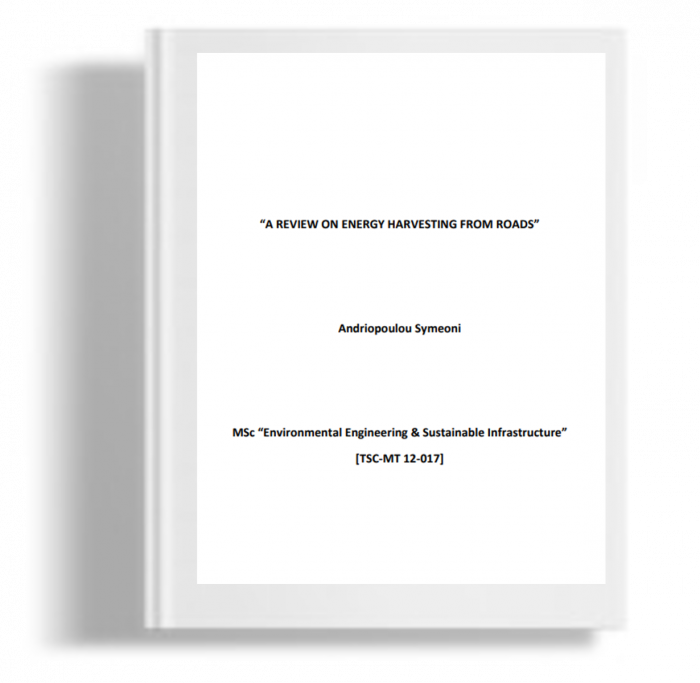Kami menggunakan cookies untuk membuat pengalaman Anda lebih baik. Untuk mematuhi petunjuk e-Pribadi yang baru, kami perlu meminta persetujuan Anda untuk menyetel cookies. Pelajari lebih lanjut .
A review on Energy Harvesting From Roads
Harvesting Energy stands alone as one of the most promising techniques for approaching the global energy problem without depleting natural resources. Energy harvesting technologies from road infrastructure is a new research territory that encompasses technologies that capture the wasted energy occurred at pavements, accumulate and store it for later use. Their most enticing characteristic is that they already offer extended paved surfaces. Paved surfaces with conductive pipes, PV sound barriers, nanomaterials or Phase Change Materials, piezosensors and thermoelectrical generators and induction heating technique are just the most updated representatives. Their outputs can be listed as production of electric energy and district heating and cooling, deicing surfaces or powering wireless networks and monitoring pavements conditions along with the enhancement of their self-healing process. The objective of this thesis is to review them and identify their strong and weak points. The three Green Roadway Concepts that shaped, proposed and implemented, theoretically are identical for the long- and short-term challenges that they meet. Their forthcoming future is here and only their in-situ implementation can prove their viability and prominence.
- Baca | Unduh PDF
- A review on Energy Harvesting From Roads
Harvesting Energy stands alone as one of the most promising techniques for approaching the global energy problem without depleting natural resources. Energy harvesting technologies from road infrastructure is a new research territory that encompasses technologies that capture the wasted energy occurred at pavements, accumulate and store it for later use. Their most enticing characteristic is that they already offer extended paved surfaces. Paved surfaces with conductive pipes, PV sound barriers, nanomaterials or Phase Change Materials, piezosensors and thermoelectrical generators and induction heating technique are just the most updated representatives. Their outputs can be listed as production of electric energy and district heating and cooling, deicing surfaces or powering wireless networks and monitoring pavements conditions along with the enhancement of their self-healing process. The objective of this thesis is to review them and identify their strong and weak points. The three Green Roadway Concepts that shaped, proposed and implemented, theoretically are identical for the long- and short-term challenges that they meet. Their forthcoming future is here and only their in-situ implementation can prove their viability and prominence.

